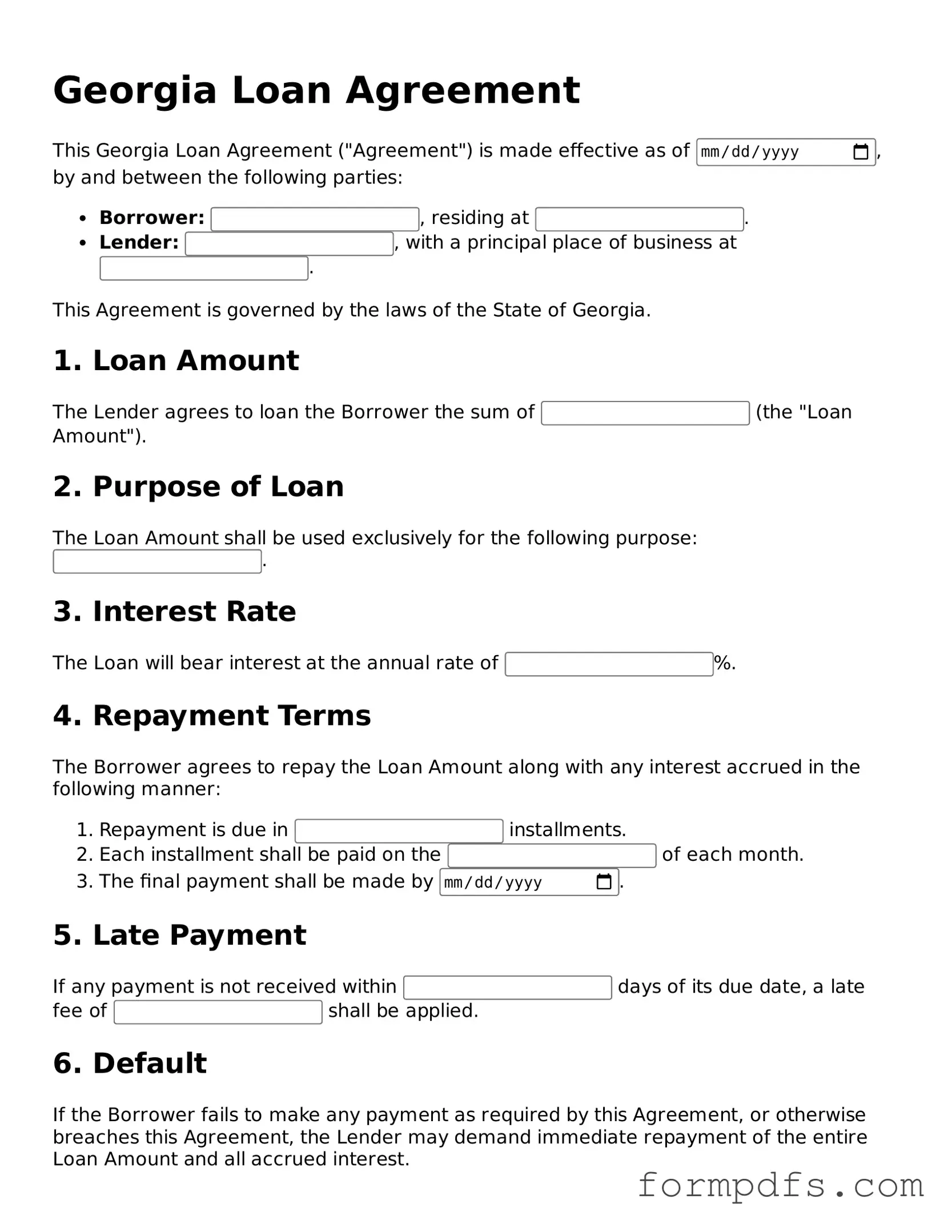What is a Georgia Loan Agreement?
A Georgia Loan Agreement is a legal document that outlines the terms and conditions under which one party lends money to another in the state of Georgia. This agreement serves to protect both the lender and the borrower by clearly stating the loan amount, interest rate, repayment schedule, and any other relevant terms.
Who needs a Loan Agreement?
Anyone who is lending or borrowing money should consider using a Loan Agreement. This includes individuals, businesses, and even family members or friends. Having a written agreement helps prevent misunderstandings and provides a clear reference in case of disputes.
What information is typically included in a Georgia Loan Agreement?
A typical Georgia Loan Agreement includes the names and addresses of the lender and borrower, the loan amount, the interest rate, the repayment schedule, and any collateral involved. Additionally, it may outline the consequences of late payments or defaults, as well as any fees associated with the loan.
Is a Loan Agreement required by law in Georgia?
No, a Loan Agreement is not legally required for personal loans in Georgia. However, having a written document is highly recommended to ensure clarity and protect the rights of both parties. It serves as a legal record of the terms agreed upon.
Can I customize a Georgia Loan Agreement?
Yes, you can customize a Georgia Loan Agreement to fit your specific needs. While there are standard elements that should be included, you can add clauses that address unique circumstances or requirements. Just ensure that any modifications comply with Georgia law.
What happens if the borrower fails to repay the loan?
If the borrower fails to repay the loan as outlined in the agreement, the lender has the right to take legal action. This may include filing a lawsuit to recover the owed amount. The specific remedies available will depend on the terms of the agreement and Georgia law.
Do I need a lawyer to create a Loan Agreement?
While it is not necessary to hire a lawyer to create a Loan Agreement, consulting with one can be beneficial. A legal expert can help ensure that the agreement is comprehensive, legally binding, and compliant with state laws, reducing the risk of future disputes.
How can I ensure my Loan Agreement is enforceable?
To ensure your Loan Agreement is enforceable, both parties should sign and date the document. It is also advisable to have the agreement witnessed or notarized. Keeping a copy of the signed agreement for both parties can further solidify its validity.
Where can I find a Georgia Loan Agreement template?
You can find Georgia Loan Agreement templates online through legal websites, or you may choose to create one from scratch using guidelines available in legal resources. Ensure that any template you use is tailored to Georgia law and fits your specific needs.
